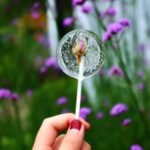Are you looking for creative ways to design a garden that both you and your furry friend can enjoy? This article will provide you with a comprehensive guide on how to create a dog-friendly outdoor space filled with safety, entertainment, and relaxation. From pet-friendly plants to interactive features, we have all the ideas and inspiration you need to transform your garden into a canine paradise.
When it comes to designing gardens for dogs, there are numerous benefits for both the pets and their owners. Not only does a dog-friendly garden provide a safe and secure environment for your beloved pet to roam freely, but it also encourages physical activity and mental stimulation. Additionally, spending time in a well-designed outdoor space can improve the overall well-being of dogs by reducing stress and anxiety.
In this article, we will explore various aspects of creating a dog-friendly garden, including safety and security measures, pet-friendly plant options, interactive play areas, water features, resting spots, pest control strategies, and more. Whether you are starting from scratch or looking to make improvements to your existing garden, our design ideas will help you create an outdoor oasis that both you and your canine companion will love.
So let’s dive into the world of gardens for dogs design ideas and get inspired.
Safety and Security
Fencing and Boundaries
When designing a secure and safe garden for dogs, one of the most important considerations is the installation of proper fencing and boundaries. This ensures that your furry friend can roam freely without the risk of wandering off into unsafe areas or getting lost. It’s essential to choose a sturdy, escape-proof fence that is tall enough to prevent jumping over, and has no gaps or weaknesses that a dog could squeeze through or dig under.
Toxic Plant Identification
Another crucial aspect of safety in a dog-friendly garden is being mindful of the plants you choose to include. Many common garden plants are toxic to dogs if ingested, so it’s important to research and identify any potentially harmful flora before introducing them into your garden.
Some examples of toxic plants for dogs include lilies, tulips, azaleas, and daffodils. Opt for pet-friendly plants such as sunflowers, rosemary, and petunias to create a beautiful yet safe environment for your canine companion.
Secure Storage and Tool Safety
To prevent accidents or injuries, it’s essential to consider secure storage for gardening tools, chemicals, and other potential hazards in your dog-friendly garden. Keep all gardening equipment safely stored in locked sheds or cabinets to ensure that curious dogs cannot access dangerous items such as fertilizers, pesticides, or sharp tools.
Additionally, be mindful when using any chemicals on the lawn or garden beds by opting for pet-safe products to maintain a healthy and hazard-free outdoor space for your beloved pet.
By implementing these suggestions for safety and security in your dog-friendly garden design plan, you can create a space where both you and your pooch can enjoy peace of mind while spending time outdoors.
Pet-Friendly Plants
When designing a garden for dogs, it’s important to consider the plant life in the space. Pet-friendly plants are not only safe for dogs to be around but also add beauty and functionality to the garden. Here’s a guide to help you choose and plant dog-safe flora in your garden.
Choosing Safe Plants
When selecting plants for your dog-friendly garden, look for options that are non-toxic to dogs. Some popular choices include marigolds, sunflowers, and snapdragons. Avoid plants like lilies, azaleas, and daffodils, which can be harmful or even poisonous to dogs if ingested.
Creating a Dog-Safe Garden Layout
Consider incorporating raised beds or containers for planting dog-safe flora. This can help protect the plants from curious paws and prevent dogs from accidentally trampling delicate flowers. Additionally, creating designated pathways or play areas for your furry friends can help keep them away from sensitive planting areas.
Maintaining a Dog-Friendly Garden
Regularly inspect your garden for any signs of damage or ingestion of harmful plants by your dog. Keep an eye out for any symptoms of illness in your pet, such as vomiting, diarrhea, or lethargy, which could be indicative of plant poisoning. Proper maintenance and care for your dog-friendly garden will ensure a safe and enjoyable outdoor space for both you and your canine companion.
By carefully choosing and planting dog-safe flora in your garden, you can create a beautiful and safe outdoor environment for your pets to enjoy. Remember to research specific plant varieties that are known to be safe for dogs, as well as any potential hazards that should be avoided. With these considerations in mind, you can craft a stunning garden that is both aesthetically pleasing and pet-friendly.
Interactive Features
Designing a dog-friendly garden involves not only creating a safe space for your furry friend but also providing opportunities for play and exercise. Including interactive features such as play areas and agility equipment can enhance your dog’s experience in the garden and contribute to their overall well-being. There are numerous creative ideas for integrating these elements into your outdoor space, from DIY projects to pre-made structures specifically designed for canine amusement.
When designing play areas for dogs, consider incorporating obstacles and agility equipment such as tunnels, ramps, weave poles, and hurdles. These elements not only provide physical exercise but also mental stimulation for your pup. You can either purchase ready-made agility sets or build them yourself using materials like PVC pipes, wood, or metal. Additionally, setting up an open space dedicated to playing fetch or other games can keep your dog entertained and active.
In addition to traditional play areas, consider including interactive features that engage a dog’s sense of smell and curiosity. Sniffing trails with hidden treats or toys, digging pits with safe sandbox material, and sensory gardens with different textures and scents can all contribute to a stimulating environment for your pet. Remember to also include shaded areas where your furry companion can take breaks between activities.
Finally, make sure that any equipment or structures in the garden are securely installed and free from hazards to prevent accidents or injuries. By carefully planning and incorporating these interactive features into your garden design, you can create a dynamic environment that meets the physical and mental needs of your beloved pet.
| Interactive Features | Creative Ideas |
|---|---|
| Obstacles and Agility Equipment | Tunnels, ramps, weave poles, hurdles |
| Engaging Senses | Sniffing trails, digging pits with safe sandbox material, sensory gardens |
| Safety Considerations | Secure installation of equipment, hazard-free design |
Water Features
When designing a dog-friendly garden, incorporating water features can add an extra dimension of enjoyment for both your canine companion and yourself. Here are some design tips for incorporating dog-friendly ponds and fountains into your outdoor space:
- Choose shallow and easily accessible water features: When including ponds or fountains in your garden, it’s essential to ensure that they are safe for dogs to interact with. Opt for shallow water elements that allow dogs to wade in and out comfortably. Avoid steep edges or difficult entry points that could pose a risk to your pets.
- Select pet-safe materials: When constructing or installing water features in your garden, be mindful of the materials used. Ensure that the pond liner, fountain basin, or any other components are made from non-toxic materials that won’t harm your furry friends if they decide to take a drink or splash around.
- Create designated play areas: To encourage safe interaction with the water features, consider creating designated play areas where dogs can enjoy the refreshing benefits of the ponds or fountains. Incorporate gentle slopes or steps leading into the water to make it easier for dogs to access and exit the feature without difficulty.
By integrating these design ideas into your garden, you can create a harmonious outdoor space that provides both a tranquil environment and a source of enjoyment for your canine companions.
Rest and Relaxation
When designing a dog-friendly garden, it’s essential to create comfortable lounging areas where your furry friends can relax and unwind. Providing designated spaces for rest and relaxation not only enhances the overall experience for your pets but also adds a cozy and inviting atmosphere to the garden.
One popular design idea for creating lounging areas for dogs is to incorporate comfortable seating options such as outdoor dog beds, cushions, or hammocks. These can be placed in shaded areas or under trees to provide protection from the sun while still allowing dogs to enjoy the outdoors. Additionally, adding pet-friendly furniture like raised platforms or benches gives dogs a designated space to lounge while being elevated from the ground.
Another important factor in creating relaxing spaces for dogs is to consider their preferences and behavior. Many dogs enjoy having a sense of enclosure or shelter when resting, so providing cozy nooks or small shelters within the garden can help them feel safe and secure. These can be achieved with simple structures like doghouses, covered crates, or even repurposed garden sheds.
In addition to comfortable seating and sheltered areas, integrating natural elements like grassy patches or soft ground coverings provides dogs with a comfortable spot to stretch out and nap. These natural lounging areas also add visual appeal to the garden while serving as practical resting spots for pets.
| Comfortable Lounging Areas Design Ideas | Benefits |
|---|---|
| Incorporate outdoor dog beds, cushions, or hammocks | Enhances overall experience for pets; adds cozy atmosphere |
| Add pet-friendly furniture like raised platforms or benches | Dogs have designated space while being elevated from the ground; Adds visual appeal |
| Providing cozy nooks or small shelters within the garden | Helps pets feel safe and secure; Considers their preferences and behavior |
Pest Control and Maintenance
When creating a dog-friendly garden, it’s essential to consider pest control and maintenance to ensure the space remains clean and safe for your furry friends. Here are some tips and ideas for managing pests and maintaining a dog-friendly garden:
- Regularly inspect the garden for any signs of pests such as fleas, ticks, or other insects that could potentially harm your dogs. Use pet-friendly pest control products to keep these pests at bay without posing any health risks to your pets.
- Keep the garden clean by promptly removing any pet waste and fallen fruits or vegetables, which can attract pests. Regularly mow the lawn, trim bushes, and remove any debris to prevent potential hiding spots for pests.
It’s important to prioritize your dog’s safety when choosing pest control methods. Opt for natural solutions instead of chemical pesticides whenever possible. For instance, planting insect-repelling plants like lavender, rosemary, or marigold can help naturally deter pests while adding beauty to your garden.
Additionally, consider incorporating elements like raised planters or fences to protect certain areas of the garden from curious dogs who may be tempted to dig or chew on plants. By implementing these pest control and maintenance strategies, you can create a safe and enjoyable outdoor space for both you and your four-legged companions.
Incorporating these design ideas into a dog-friendly garden can make all the difference in ensuring that it remains an inviting space for both you and your pets alike. By prioritizing safety and cleanliness in the garden space, you can create a harmonious environment where your dogs can roam freely without worry.
Design Inspiration
In conclusion, creating a dog-friendly garden can not only benefit your furry friends but also enhance the overall appeal of your outdoor space. By prioritizing safety, incorporating pet-friendly plants, and adding interactive features like play areas and agility equipment, you can design a secure and stimulating environment for your dogs to enjoy. Additionally, the inclusion of water elements and comfortable lounging areas can further enrich the experience for both pets and owners.
When it comes to pest control and maintenance, it’s important to implement strategies that keep the garden clean and safe for dogs, such as using pet-friendly pest control methods and regularly cleaning up any waste or debris. By being diligent in these efforts, you can ensure that your garden remains a healthy environment for your canine companions.
Looking for design inspiration for your dog-friendly garden? Take inspiration from stunning examples around the world that showcase innovative ideas and beautiful aesthetics. From themed gardens to unique landscaping features, there are endless possibilities for creating a space that is both functional and visually impressive. Ultimately, with careful planning and thoughtful design choices, you can create a garden that not only caters to the needs of your dogs but also reflects your personal style and creativity.
Frequently Asked Questions
What Landscape Is Best for Dogs?
The best landscape for dogs is one that provides them with enough space to run and play. A large, open area with grass or soft ground cover is ideal for dogs to roam and exercise.
What Type of Garden Is Best for Dogs?
A dog-friendly garden should prioritize safety and comfort. This means avoiding toxic plants, creating shady spots for resting, and including durable toys or obstacles for play. It’s also important to have a designated bathroom spot for your pet.
How Do You Make a Dog Garden?
To create a dog garden, start by securing the perimeter to keep your pet safe. Choose dog-safe plants and consider adding a water feature for hydration. Provide toys, comfortable seating areas, and a designated potty area as well. Regular maintenance will keep the space clean and enjoyable for your furry friend.

Welcome to my gardening blog! I am passionate about plants and enjoy sharing my knowledge and experiences with others. In this blog, I will write about everything related to gardening, from tips on how to get started to updates on my own garden projects.





